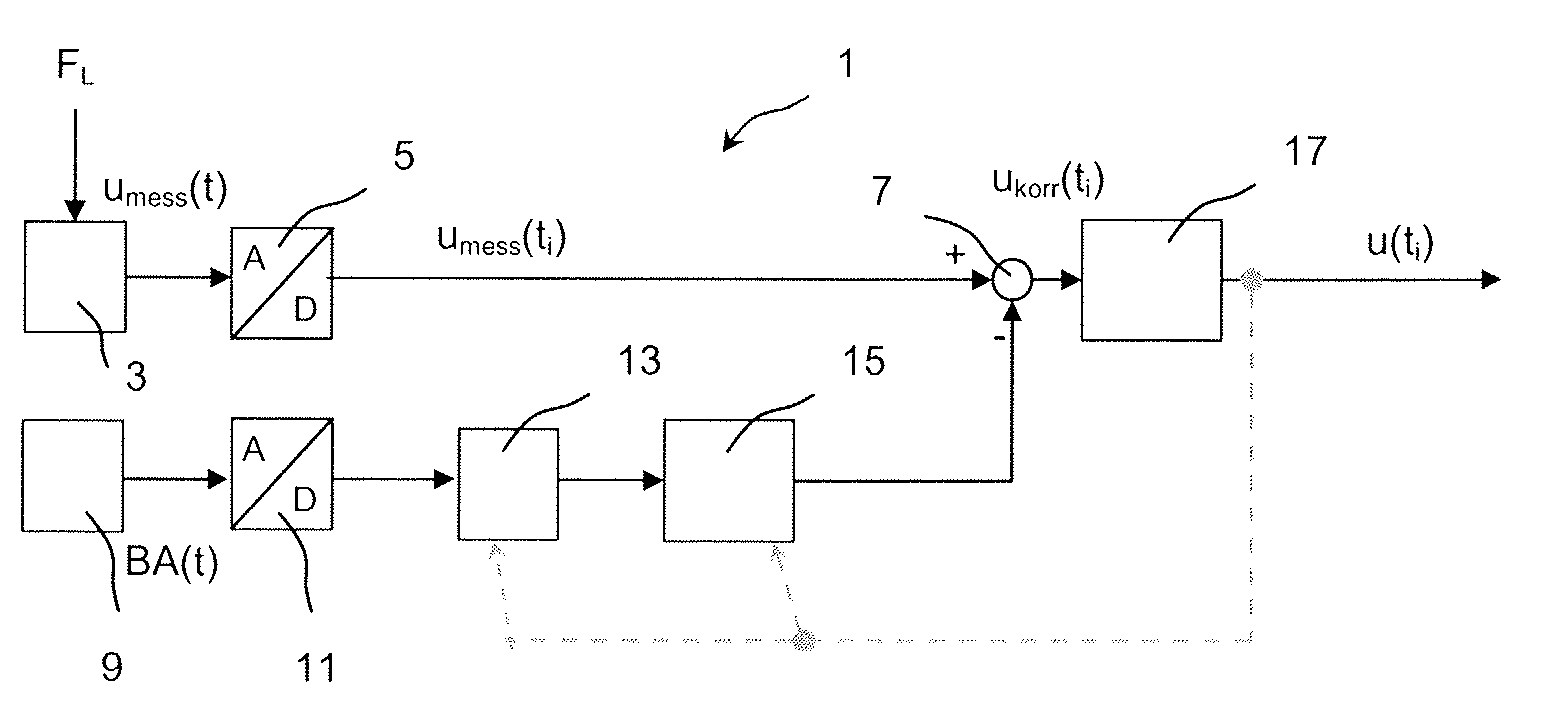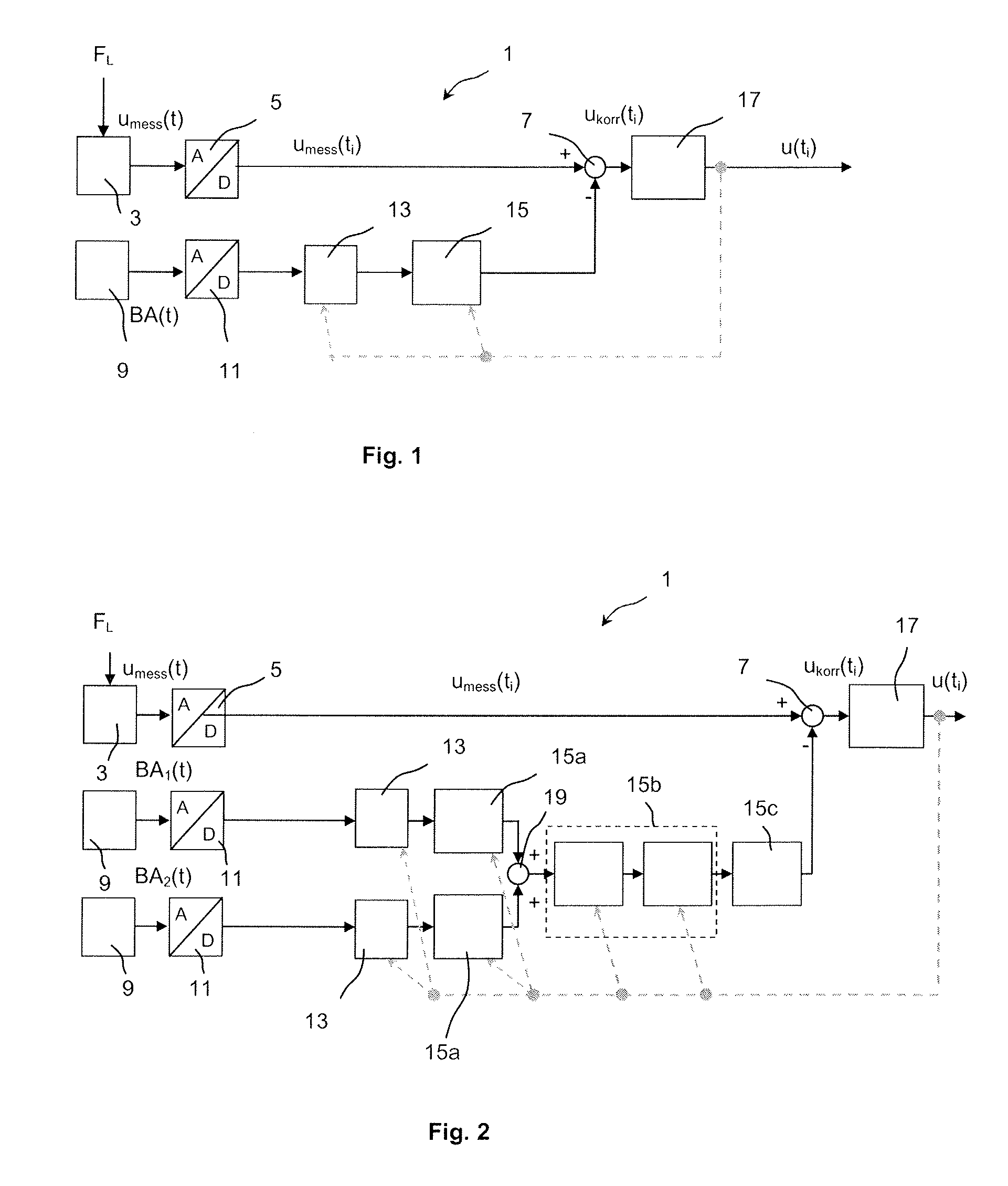Device for vibration compensation of the weight signal of a weighing sensor
a technology of vibration compensation and weighing sensor, which is applied in the direction of weighing auxiliary devices, weighing apparatus details, instruments, etc., can solve the problems of insufficient no longer being in an acceptable range, and not being able to achieve optimal adjustment of image filter, etc., to achieve high measurement accuracy
- Summary
- Abstract
- Description
- Claims
- Application Information
AI Technical Summary
Benefits of technology
Problems solved by technology
Method used
Image
Examples
Embodiment Construction
[0027]FIG. 1 shows in a schematic block diagram of a weighing device 1, showing only the components relevant for the understanding of the present invention. The weighing device 1 comprises a weighing sensor 3 that is loaded with a load force FL from a mass mL to be weighed on a load transducer of the weighing sensor 3. The weighing sensor can function according to the principle of the electromagnetic force compensation or according to any other possible physical principle for detecting the weight of a mass mL to be weighed. Here, for the present invention, it is insignificant whether the weighing sensor 3 is formed as an individual load cell and, for example, integrated with an analog / digital converter unit 5 or whether the weighing sensor 3 exists as a separate, stand-alone unit.
[0028]The initially still analog measurement signal or weighing signal umess(t) of the weighing sensor 3 is fed to the converter input of the analog / digital converter unit 5 that generates, at its output, a...
PUM
 Login to View More
Login to View More Abstract
Description
Claims
Application Information
 Login to View More
Login to View More - R&D
- Intellectual Property
- Life Sciences
- Materials
- Tech Scout
- Unparalleled Data Quality
- Higher Quality Content
- 60% Fewer Hallucinations
Browse by: Latest US Patents, China's latest patents, Technical Efficacy Thesaurus, Application Domain, Technology Topic, Popular Technical Reports.
© 2025 PatSnap. All rights reserved.Legal|Privacy policy|Modern Slavery Act Transparency Statement|Sitemap|About US| Contact US: help@patsnap.com



